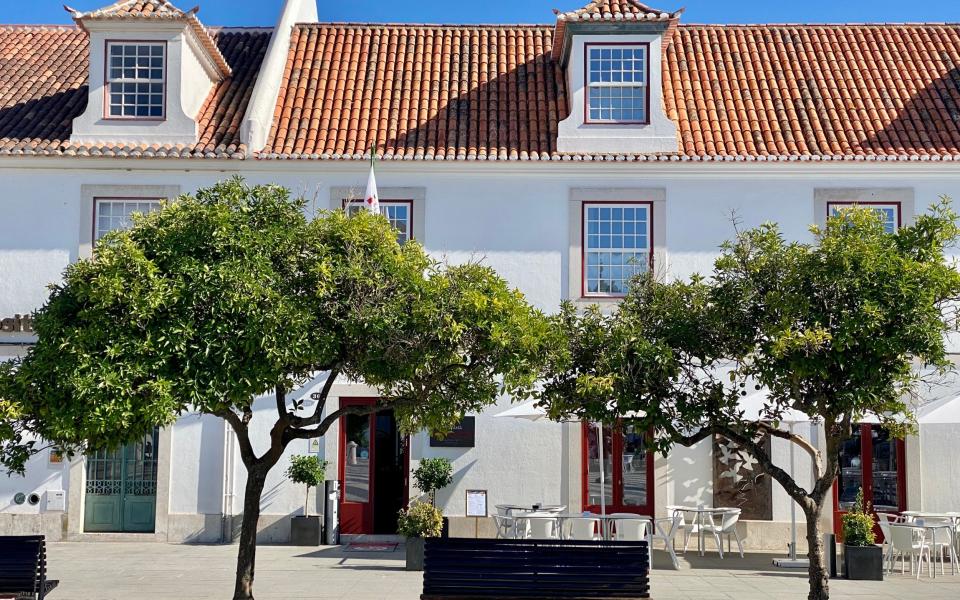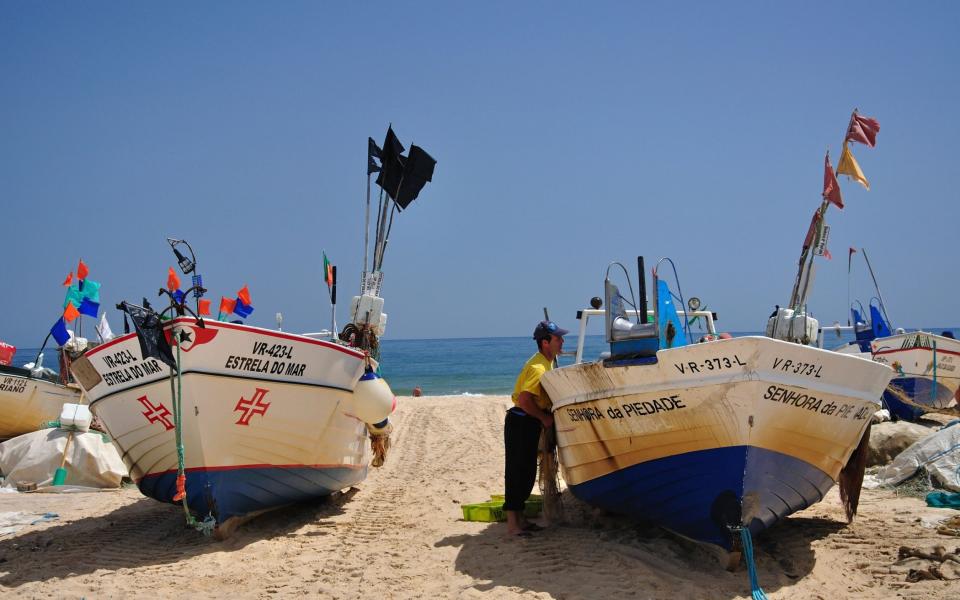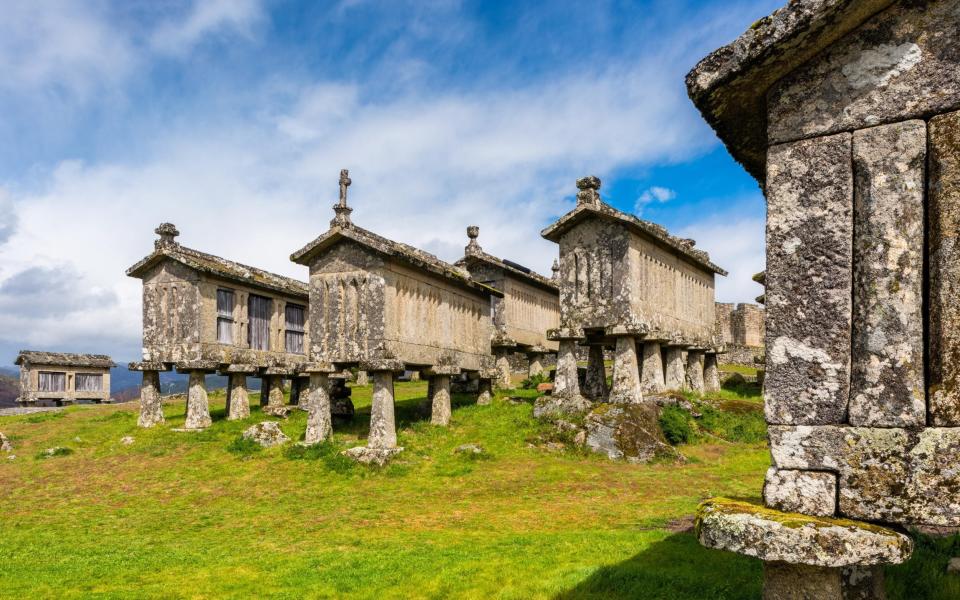Surrounded by charming 18th-century townhouses, surrounded by the fragrant orange trees that line the main square of Vila Real de Santo António and a mosaic of black and white cobblestones under your feet, you might think that this small town’s fame lies in its appearance.
In many ways you’re right, you won’t find a more beautiful, more orderly town if you travel the Algarve, but Vila Real de Santo António, located just on the banks of the Guadiana River that separates Portugal from Spain, has hidden depths.
It was only a small fishing village when it was swallowed by a tsunami in the 18th century, but it was rebuilt with a certain splendor due to its importance as a frontier town. According to the story, the terrace of elegant whitewashed houses overlooking the river is uniform in order to make the Spaniards think through their telescopes that it was actually the facade of a magnificent palace. The energetic Marquis of Pombal (who gave his name to the main square), who rebuilt Lisbon after the same devastating earthquake and tsunami of 1755, built this town in two years using the Pombaline orthogonal network and with devastating expenses brought from Lisbon.
In 1835, the town became the birthplace of canned fish, with at one point there being 27 canneries in the town. If you look in your kitchen cabinets today, you’ll see the name Ramirez on your tuna or sardine. The family who lived here at the time (the fifth generation now runs the world’s oldest canned fish business) were the ones who founded the first purpose-built hotel south of Lisbon, the Hotel Guadiana, which opened here in 1926. Designed by Swiss-born architect Ernesto Korrodi, the hotel was filled with Art Déco elegance that echoed the Roaring Twenties style and was hoped to attract travelers to the 1929 Expo in Seville, less than 100 miles away.
Then came World War II; the Ramirez family moved their production to northern Portugal to take advantage of the more efficient railway network, and the businesses in the city centre dried up, leaving the tall red chimneys of the canneries to the storks that nested there each year.
But just a decade or so ago a local boy became Mayor and launched a serious effort to restore the town’s deteriorating heritage, and now it’s ablaze with everything but the dazzle of British tourists.

Hotel Guadiana is now a Grand House, its light-filled rooms recreate the grandeur of its past and its bar serves the city’s best martinis. There’s also a Pousada set in four 18th-century townhouses, just above the orange-tree-lined main square, where you can gaze across the characteristic sloping terracotta roofs from the rooftop pool. One recent addition is a branch of The Addresses, a beautifully restored three-bedroom house just off the main square that can be rented with concierge services.
The hotels have added restaurants, mostly serving Portuguese regional cuisine, from chicken piri-piri to grilled octopus. There are plenty of shops in between, including the Soares wine shop on Teófilo Braga Street, where you can discover the rich world of Portuguese wines.
And then there’s the beach. Praia de Santo António is reached through a pine grove rich in the scent of resin and sand dunes adorned with yellow-flowered succulents and the occasional sunbathing chameleon. The Atlantic Ocean, warmed by the nearby Mediterranean, can reach a balmy 26 degrees, making it the warmest spot in the Algarve. What’s not to love?


Visiting Vila Real de Santo António in the summer of 2024
Where to stay
Grand House (00 351 281 530 290) is on the riverside and offers old-world elegance in 31 rooms. From €421 (£355), including breakfast.
Pousada Vila Real de Santo António (00 351 281 249 120) has a restaurant and swimming pool options that spill over onto the town’s main square. Double rooms start from €144 (£122), including breakfast. Casa Três is still available for six at the end of August, with three double bedrooms and a swimming pool. From €3,700 (£3,125) for a week.
If you’re looking for more places to stay, check out our guide to the best hotels in the Algarve.
What to eat
Live like a local and eat Algarve oysters – the best are eaten with garlic, olive oil and coriander at the Grand Beach Club with your feet in the sand.
For more places to eat, check out our guide to the best restaurants in the Algarve.
Don’t miss
A visit to the neighbouring salt pans at Castro Marim. Recently restored by the artisanal salt company Sal Marim, these now supply many of Portugal’s top restaurants. They’re a great souvenir to take home, especially if you prefer their beautifully packaged salts, especially piri-piri.
For more things to do, check out our guide to the best attractions in the Algarve.
How to get there
BA and Easyjet operate flights from many UK airports to Faro, which is a 50-minute drive along the coast from Vila Real de Santo António.
For more information on visiting the region, check out our guide to holidays in the Algarve.
Five other secret places in Portugal
1. Cacelha Velha, Algarve
Here, the streets are named after poets, you can eat oysters in the shadow of the church tower and enjoy the sunset on the magnificent beach.
2. Portinho da Arrabida, Lisbon Beach
Located in a Natural Park, this bay is one of the most beautiful in Portugal. Have lunch with fresh grilled fish at O Farol (farolarrabida.pt).
3. Marvão, Alentejo
Built on a granite mountain, this small medieval town with stunning views is surrounded by 13th-century walls with a church and castle.
4. Lindoso, Minho
This small stone village in Portugal’s only National Park is the best place to see granite tomb-like architecture espigueiros (granaries).


5. Linhares de Beja, Central Portugal
Dominated by castle towers, Linhares is like a living museum with its forum where justice was administered in the 15th century.
This article was originally published in August 2022 and has been revised and updated.